Plastic Shrinkage and Cracking Behavior of Mortar Containing Recycled Sand from Aerated Blocks and Clay Bricks
Abstract
:1. Introduction
2. Materials and Methods
2.1. Materials
2.2. Experimental Design
2.3. Workability Test
2.4. Shrinkage Test
2.5. Scanning Electron Microscopy (SEM) Test
3. Results
3.1. Strain Distribution in CONTROL
3.2. Strain Distribution in ABs1
3.3. Strain Distribution in ABs2
3.4. Strain Distribution in CBs1
3.5. Strain Distribution in CBs2
4. Discussion
4.1. Comparison Analysis
4.2. Micro–Structures
4.3. Additional Analysis on ABs2
5. Conclusions
- The fluidity of mortar was reduced by using recycled sand from aerated blocks and clay bricks. In order to keep the same fluidity with the control, additional water is required, and the aerated blocks sand needs more.
- The pore water in ABs sand particles works as an internal curing agent, which results in a lower strain concentration compared with the control. However, when extra water was added to keep the same fluidity as the control mortar, this led to obviously visible cracks in the sample of ABs2, and the average distance between cracks reached 25 mm.
- The micro–structure morphology of the mortar containing recycled sands showed that there were a great amount of pores that ranged from 2 to 50 microns in aerated blocks sand particles. However, a relatively small amount of pores were found in the red brick sand particles. Therefore, the addition of the aerated blocks sand showed a higher influence on the plastic shrinkage rather than clay bricks sand.
- More strain concentration zones and higher strain concentration values always means that the mortar has a higher risk to crack due to the plastic shrinkage. On the contrary, less strain concentration zones and lower strain concentration values are also always related to a lower risk of cracking.
Author Contributions
Funding
Institutional Review Board Statement
Informed Consent Statement
Data Availability Statement
Conflicts of Interest
References
- Xiao, J.; Li, W.; Fan, Y.; Huang, X. An overview of study on recycled aggregate concrete in China (1996–2011). Constr. Build. Mater. 2012, 31, 364–383. [Google Scholar] [CrossRef]
- Tam, V.W.Y.; Soomro, M.; Evangelista, A.C.J. A review of recycled aggregate in concrete applications (2000–2017). Constr. Build. Mater. 2018, 172, 272–292. [Google Scholar] [CrossRef]
- Zega, C.J.; Di Maio, A.A. Use of recycled fine aggregate in concretes with durable requirements. Waste Manag. 2011, 31, 2336–2340. [Google Scholar] [CrossRef] [PubMed] [Green Version]
- Shi, C.; Li, Y.; Zhang, J.; Li, W.; Chong, L.; Xie, Z. Performance enhancement of recycled concrete aggregate—A review. J. Clean. Prod. 2016, 112, 466–472. [Google Scholar] [CrossRef]
- Liu, Q.; Singh, A.; Xiao, J. Workability and mechanical properties of mortar containing recycled sand from aerated concrete blocks and sintered. Resour. Conserv. Recy. 2020, 157, 104728. [Google Scholar] [CrossRef]
- Ulsen, C.; Kahn, H.; Hawlitschek, G.; Masini, E.; Ângulo, S.C.; John, V.M. Production of recycled sand from construction and demolition waste. Constr. Build. Mater. 2013, 40, 1168–1173. [Google Scholar] [CrossRef]
- Naceri, A.; Hamina, M.C. Use of waste brick as a partial replacement of cement in mortar. Waste Manag. 2009, 29, 2378–2384. [Google Scholar] [CrossRef]
- Stefanidou, M.; Anastasiou, E.; Filikas, K.G. Recycled sand in lime–based mortars. Waste Manag. 2014, 34, 2595–2602. [Google Scholar] [CrossRef]
- Le, T.; Remond, S.; Le Saoût, G.; Garcia–Diaz, E. Fresh behavior of mortar based on recycled sand—Influence of moisture condition. Constr. Build. Mater. 2016, 106, 35–42. [Google Scholar] [CrossRef] [Green Version]
- Zhao, Z.; Remond, S.; Damidot, D.; Xu, W. Influence of hardened cement paste content on the water absorption of fine recycled concrete aggregates. J. Sustain. Cem. Mater. 2013, 2, 186–203. [Google Scholar] [CrossRef]
- Abousnina, R.; Manalo, A.; Ferdous, W.; Lokuge, W.; Benabed, B.; Al–Jabri, K.S. Characteristics, strength development and microstructure of cement mortar containing oil–contaminated sand. Constr. Build. Mater. 2020, 252, 119155. [Google Scholar] [CrossRef]
- Zhang, J.; Hou, D.; Sun, W. Experimental study on the relationship between shrinkage and interior humidity of concrete at early age. Mag. Concr. Res. 2010, 62, 191–199. [Google Scholar] [CrossRef]
- Zhang, J.; Han, Y.D.; Gao, Y.; Luosun, Y. Integrative Study on the Effect of Internal Curing on Autogenous and Drying Shrinkage of High–Strength Concrete. Dry. Technol. 2013, 31, 565–575. [Google Scholar] [CrossRef]
- Lee, N.K.; Abate, S.Y.; Kim, H.-K. Use of recycled aggregates as internal curing agent for alkali–activated slag system. Constr. Build. Mater. 2018, 159, 286–296. [Google Scholar] [CrossRef]
- Chen, F.; Wu, K.; Ren, L.; Xu, J.; Zheng, H. Internal Curing Effect and Compressive Strength Calculation of Recycled Clay Brick Aggregate Concrete. Materials 2019, 12, 1815. [Google Scholar] [CrossRef] [PubMed] [Green Version]
- Weber, S.; Reinhardt, H.W. New generation of high performance concrete: Concrete with autogeneous curing. Adv. Cem. Based Mater. 1997, 6, 59–68. [Google Scholar] [CrossRef]
- Siddika, A.; Mamun, M.D.; Ferdous, W.; Saha, A.K.; Alyousef, R. 3D–printed concrete: Applications, performance, and challenges. J. Sustain. Cem.–Based Mater. 2020, 9, 127–164. [Google Scholar] [CrossRef]
- GB175–2007. Cement, Common Portland; China National Standardization Management Committee: Beijing, China, 2007. [Google Scholar]
- Lo, T.Y.; Cui, H.Z.; Li, Z.G. Influence of aggregate prewetting and fly ash on mechanical properties of lightweight concrete. Waste Manag. 2004, 24, 333–338. [Google Scholar] [CrossRef]
- GB/T2419–2005. Test method for fluidity of cement mortar; China National Standardization Management Committee: Beijing, China, 2005. [Google Scholar]
- Corr, D.; Accardi, M.; Graham–Brady, L.; Shah, S.P. Digital image correlation analysis of interfacial debonding properties and fracture behavior in concrete. Eng. Fract. Mech. 2007, 74, 109–121. [Google Scholar] [CrossRef]
- Liu, M.J.; Tian, Q.; Miao, C. Investigation on the plastic shrinkage of cementitious materials under drying conditions: Mechanism and theoretical model. Mag. Concr. Res. 2012, 64, 551–561. [Google Scholar] [CrossRef]
- Cohen, M.D.; Olek, J.; Dolch, W.L. Mechanism of plastic shrinkage cracking in Portland cement and Portland cement–silica fume paste and mortar. Cem. Concr. Res. 1990, 20, 103–119. [Google Scholar] [CrossRef]
- Dao, V.; Dux, P.; Morris, P.; O’Moore, L. Plastic shrinkage cracking of concrete. Aust. J. Struct. Eng. 2010, 10, 207–214. [Google Scholar]
- Holt, E.; Leivo, M. Cracking risks associated with early age shrinkage. Cem. Concr. Res. 2004, 26, 521–530. [Google Scholar] [CrossRef]
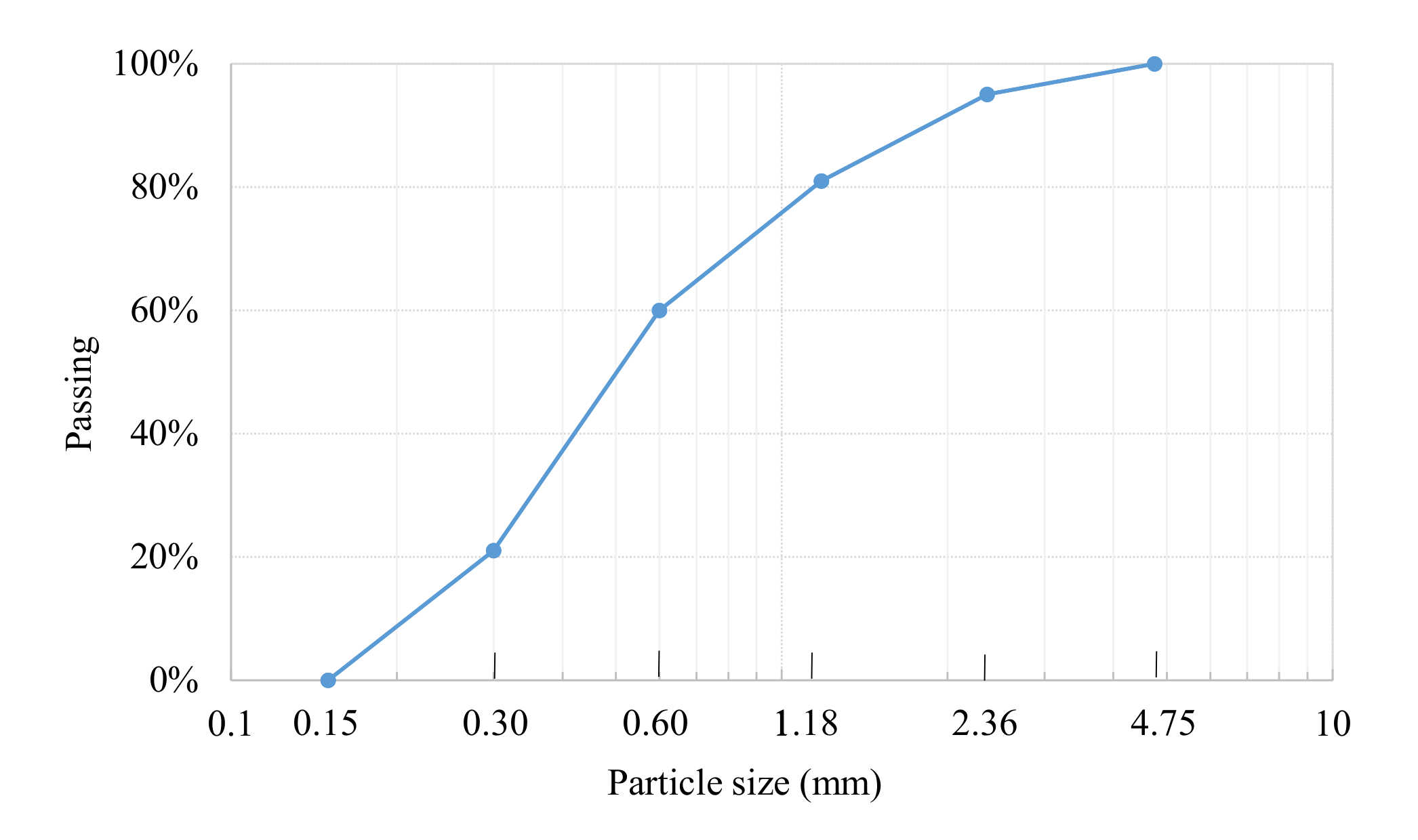

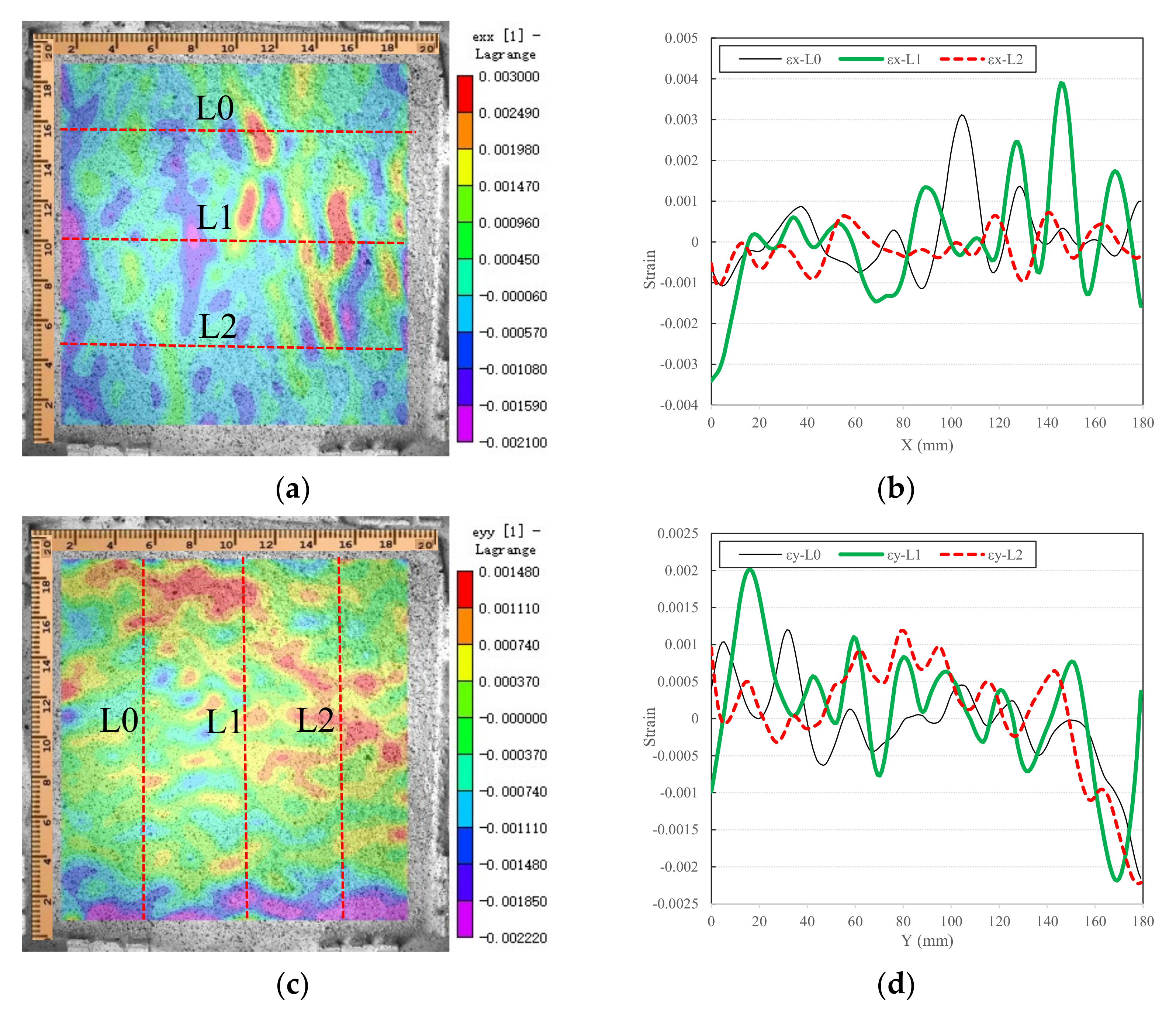
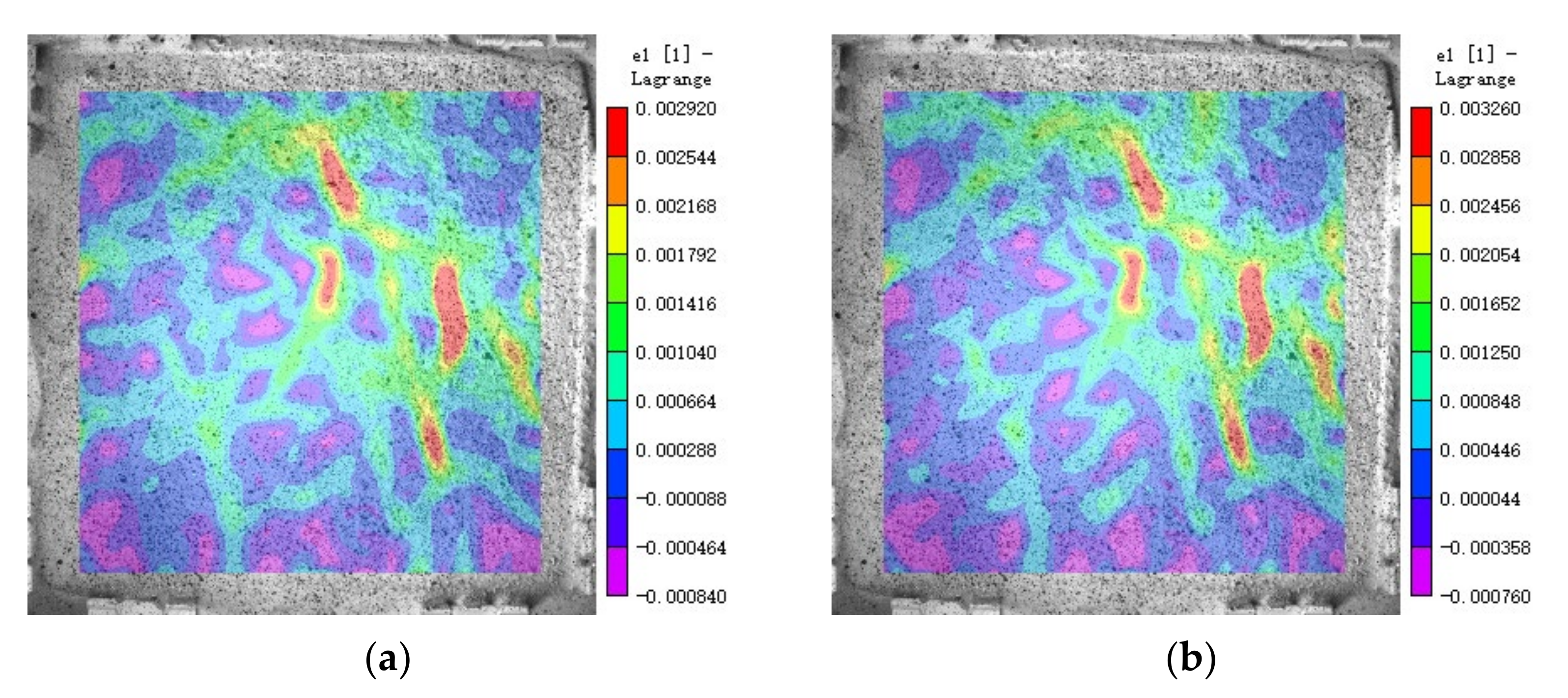
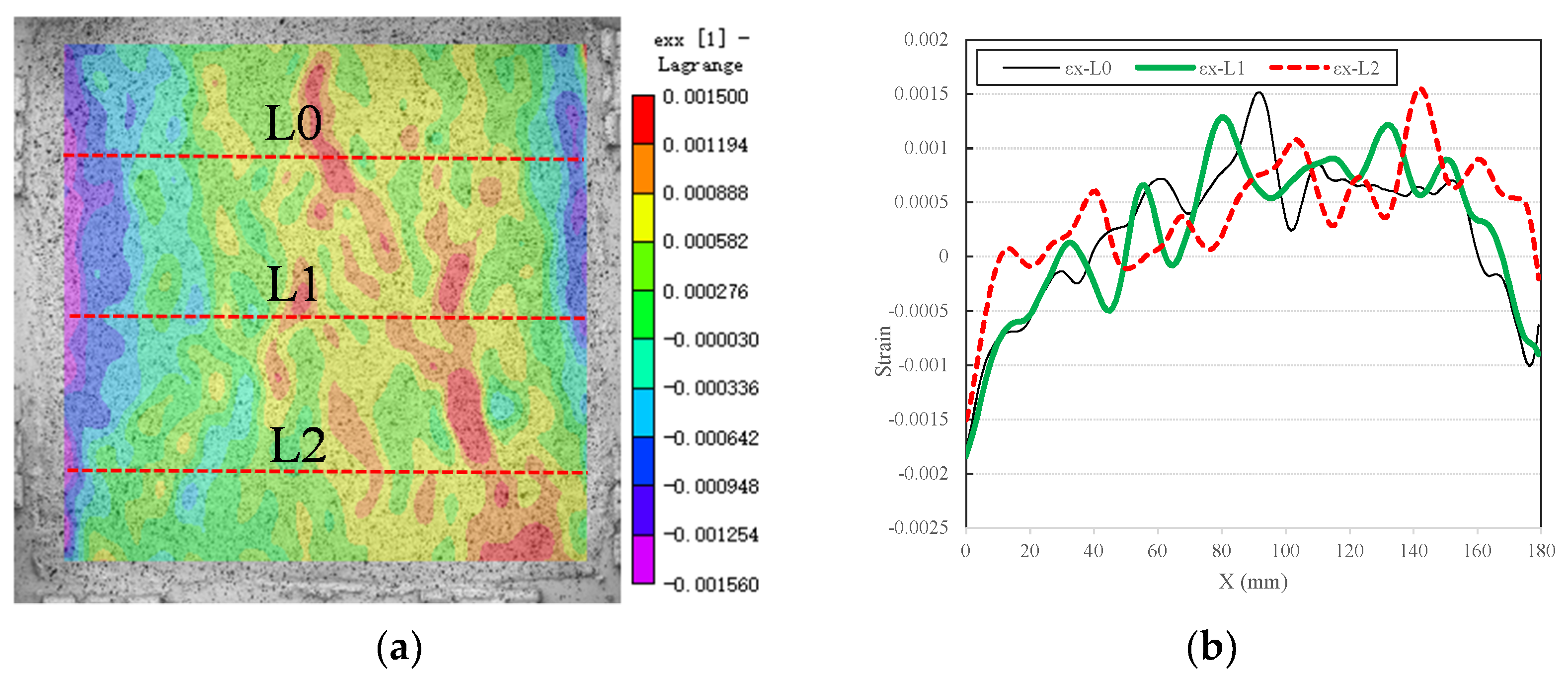

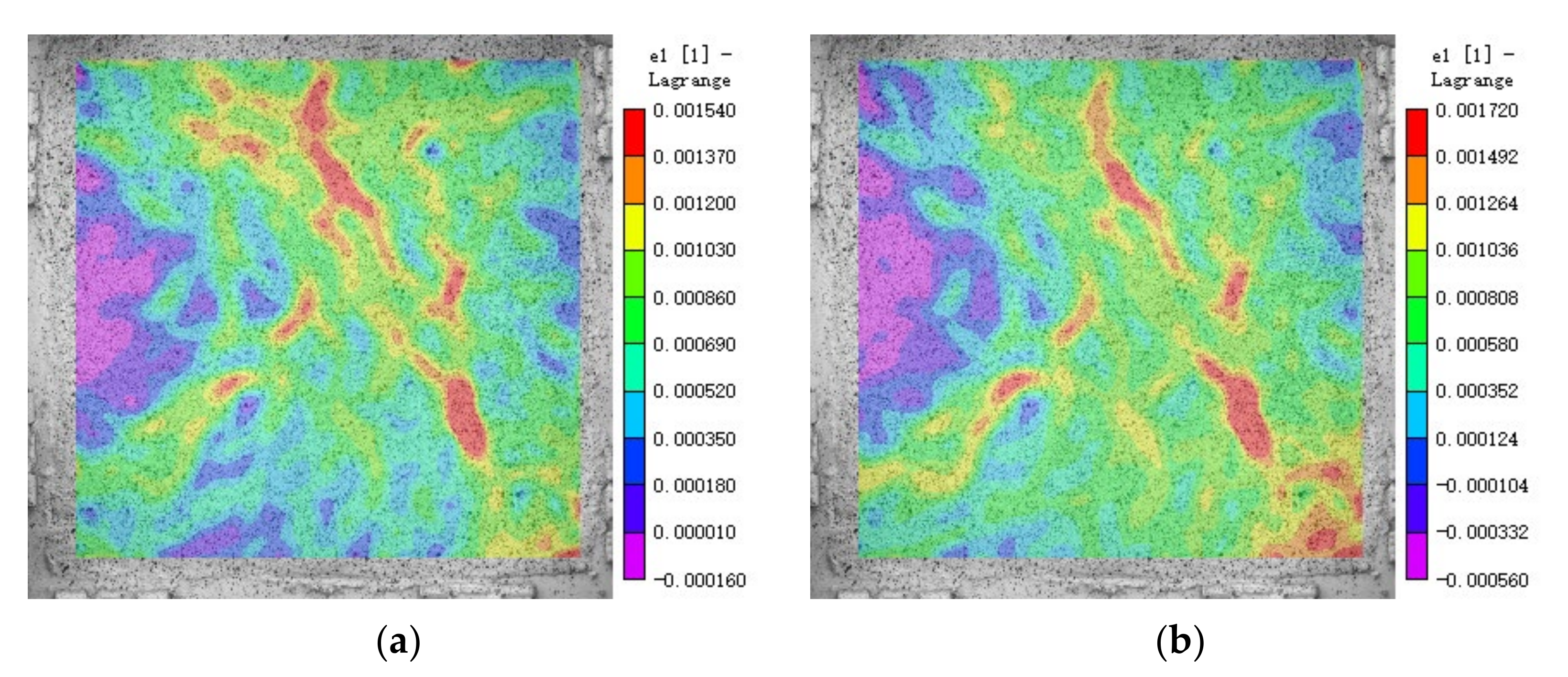


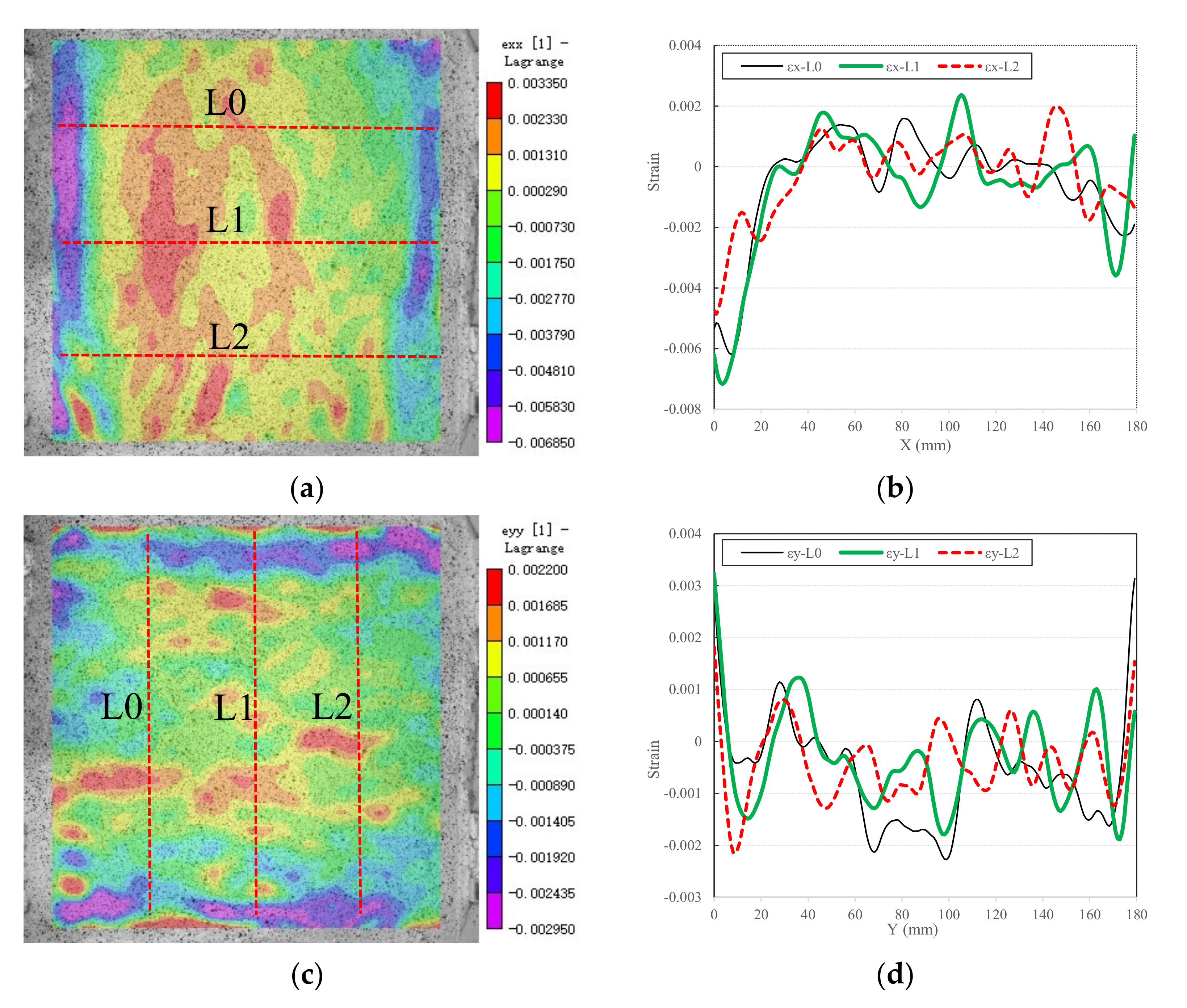




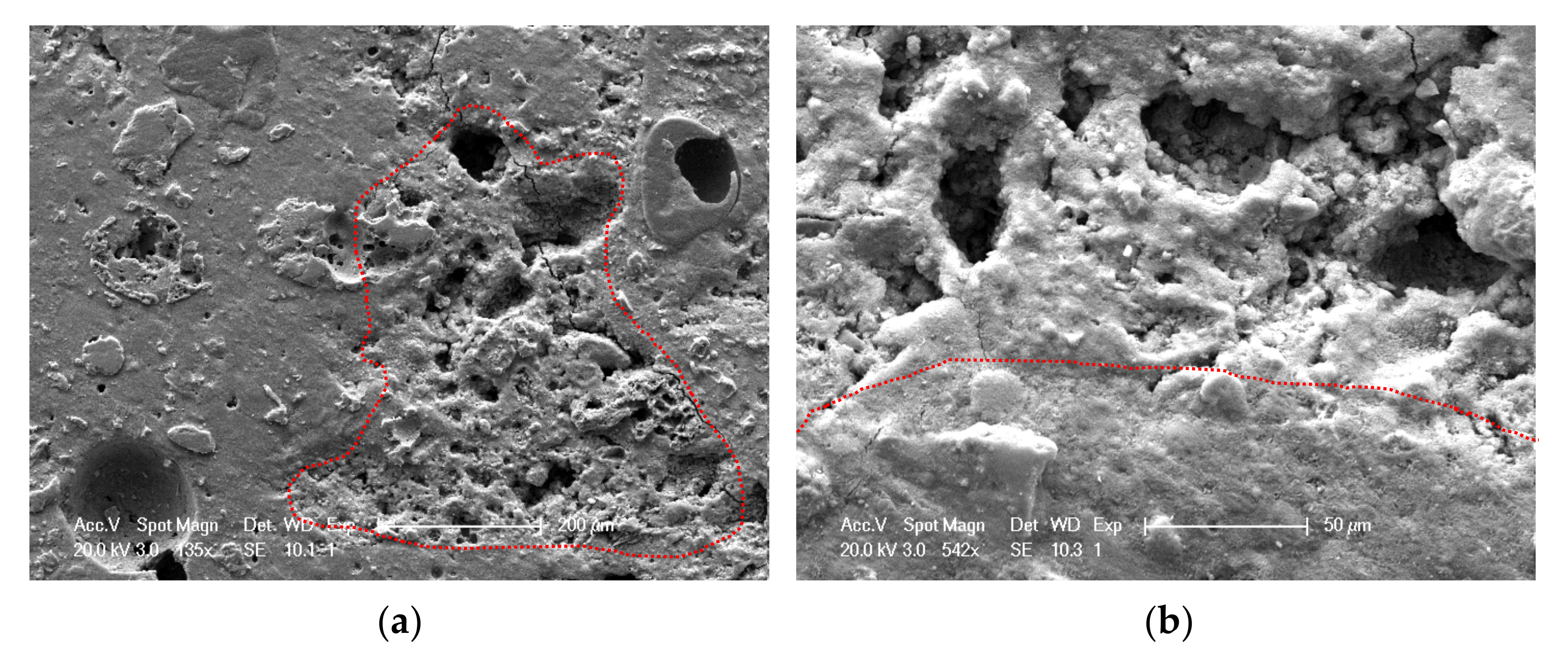
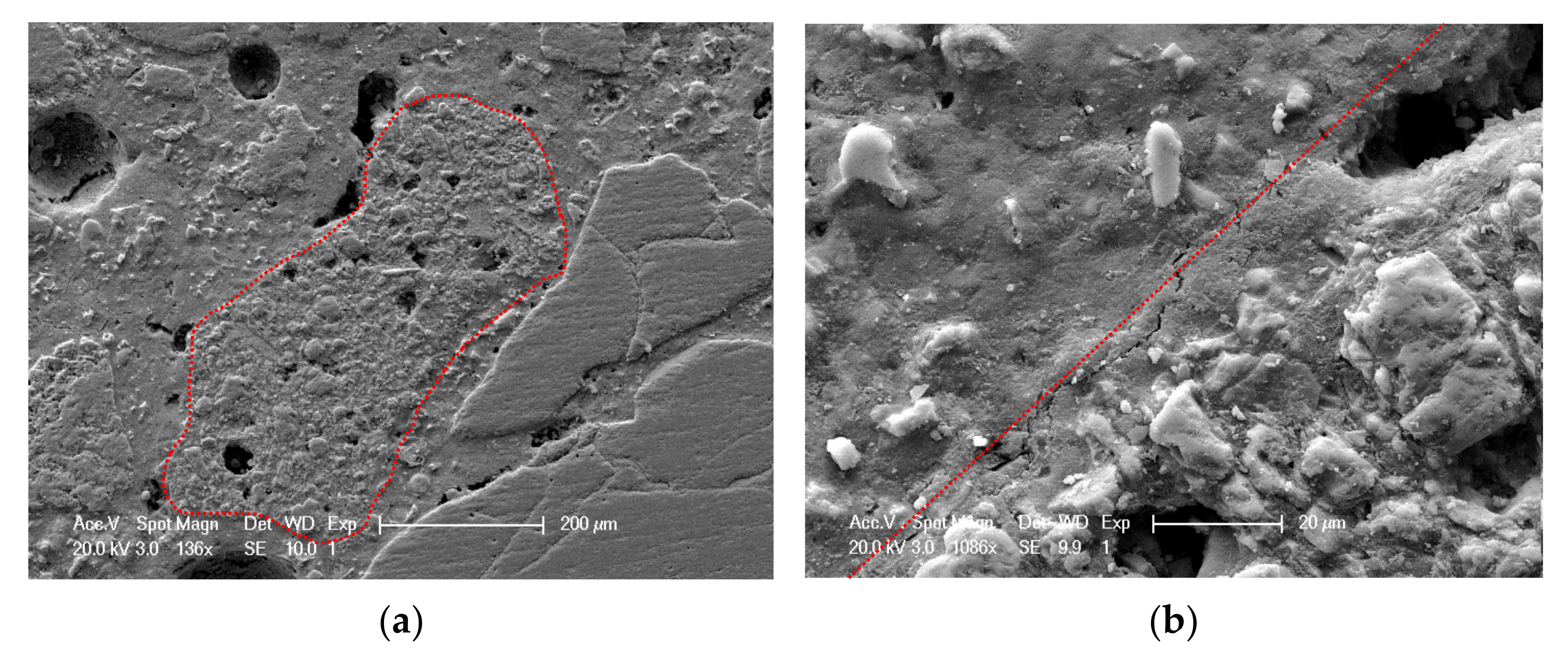
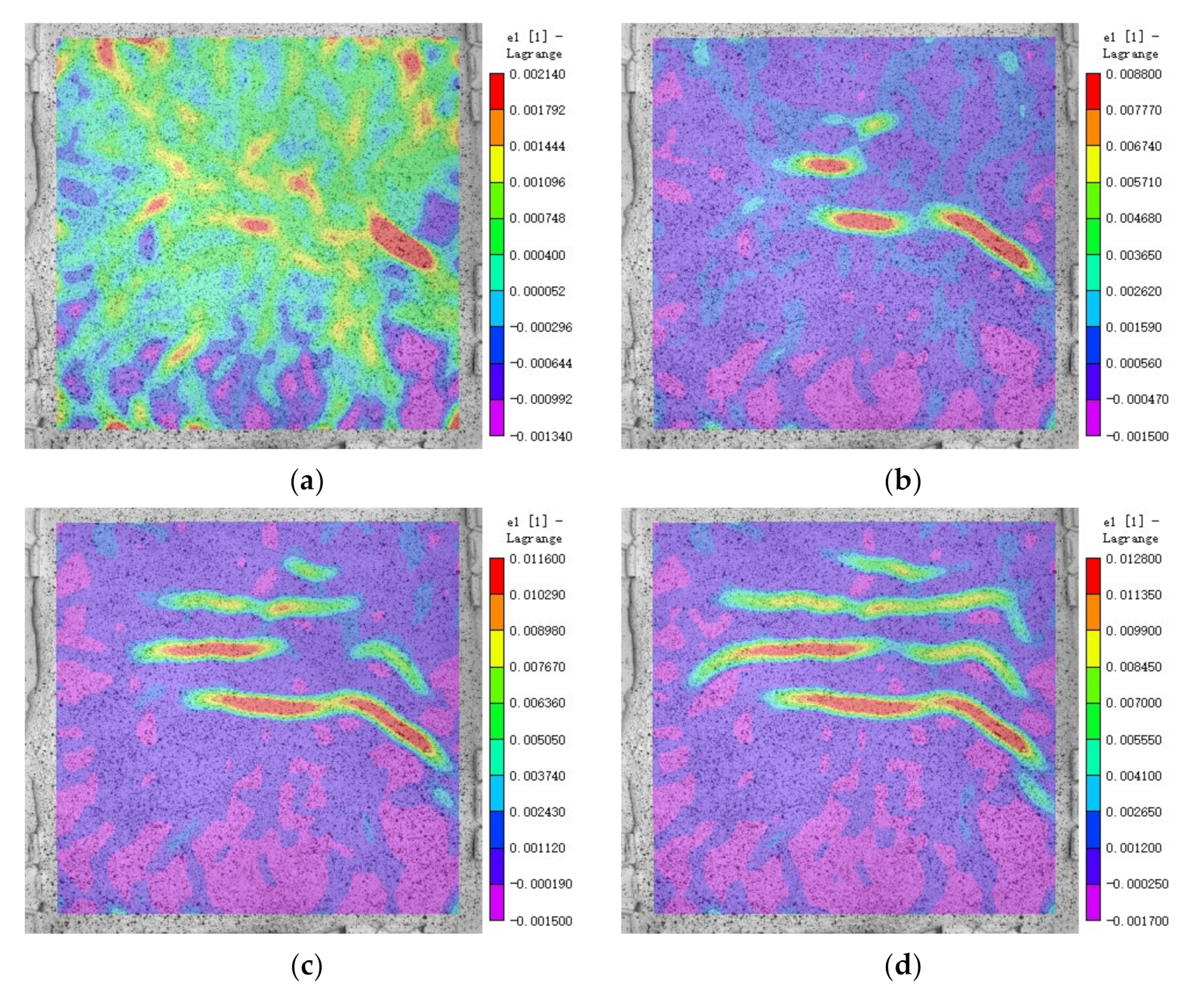
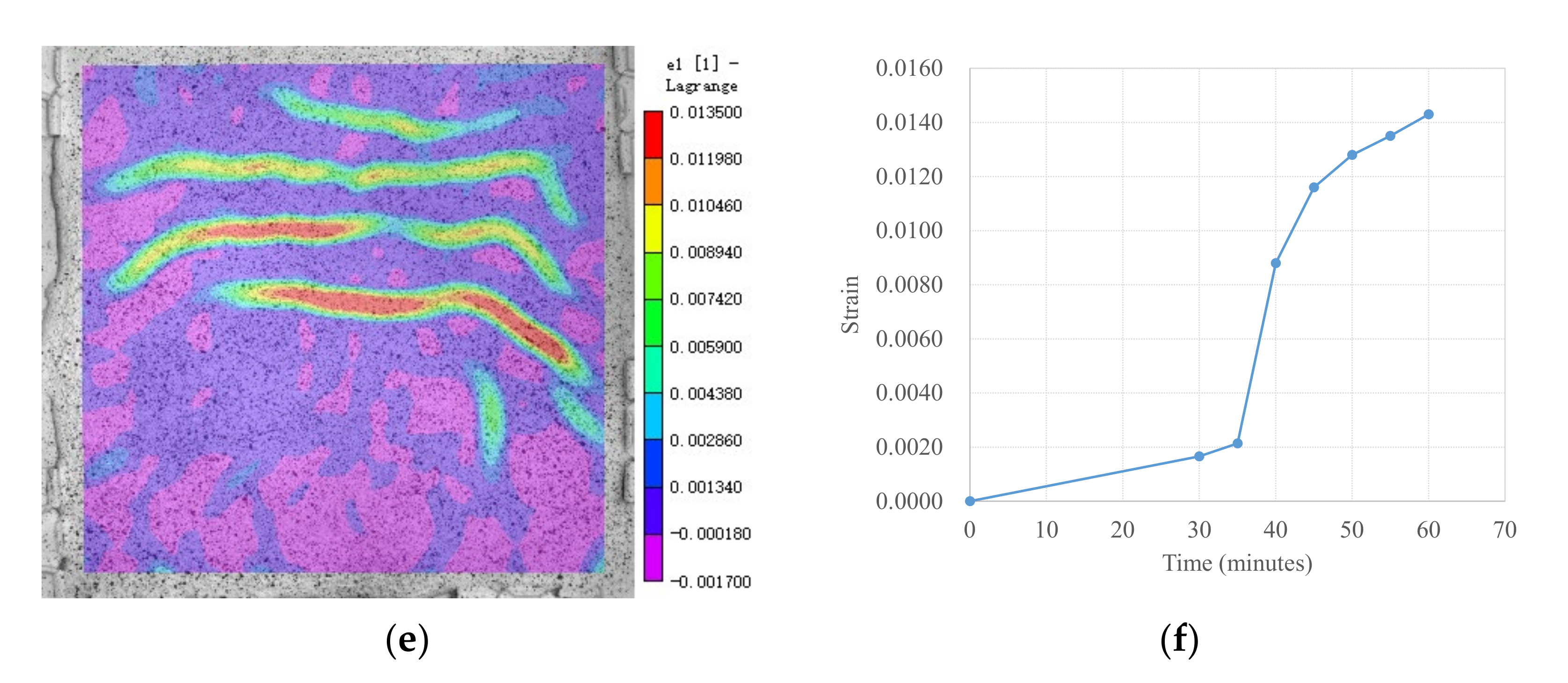
| Name | Bulk Density (g/cm3) | Apparent Density (g/cm3) | Water Absorption (%) |
|---|---|---|---|
| ABs sand | 0.918 | 2.668 | 34.64 |
| CBs sand | 2.074 | 3.014 | 10.34 |
| River sand | 2.734 | 3.106 | 2.012 |
| Material | Chemical Composition | |||||||
|---|---|---|---|---|---|---|---|---|
| SiO2 | Al2O3 | Fe2O3 | CaO | MgO | K2O | Na2O | SO3 | |
| ABs sand | 60.22 | 17.21 | 12.98 | 3.01 | 1.34 | 0.34 | 1.87 | 0.33 |
| CBs sand | 66.54 | 14.88 | 6.62 | 4.24 | 2.73 | 1.42 | 1.03 | 0.46 |
| River sand | 70.09 | 16.54 | 2.23 | 1.52 | 1.39 | 3.28 | 4.12 | – |
| Name | Water (g) | Cement (g) | Sand (g) | ABs Sand (g) | CBs Sand (g) | Fluidity (mm) |
|---|---|---|---|---|---|---|
| Control | 130.0 | 200.0 | 600.0 | 0.0 | 0.0 | 115.0 |
| ABs1 | 130.0 | 200.0 | 420.0 | 74.0 | 0.0 | 95.0 |
| ABs2 | 160.0 | 200.0 | 420.0 | 74.0 | 0.0 | 115.0 |
| CBs1 | 130.0 | 200.0 | 420.0 | 0.0 | 167.1 | 110.0 |
| CBs2 | 135.0 | 200.0 | 420.0 | 0.0 | 167.1 | 115.0 |
| Name | εx | εy | ||||
|---|---|---|---|---|---|---|
| L0 | L1 | L2 | L0 | L1 | L2 | |
| Control | 8 | 8 | 8 | 7 | 7 | 9 |
| ABs1 | 8 | 7 | 8 | 8 | 7 | 7 |
| ABs2 | 8 | 6 | 7 | 7 | 7 | 5 |
| CBs1 | 7 | 7 | 8 | 10 | 7 | 8 |
| CBs2 | 10 | 10 | 11 | 8 | 9 | 8 |
| Name | εx | εy | ||||
|---|---|---|---|---|---|---|
| L0 | L1 | L2 | L0 | L1 | L2 | |
| Control | 0.0031 | 0.0039 | 0.0007 | 0.0012 | 0.0021 | 0.0012 |
| ABs1 | 0.0017 | 0.0012 | 0.0005 | 0.0015 | 0.0013 | 0.0015 |
| ABs2 | 0.0007 | 0.0012 | 0.0009 | 0.0100 | 0.0170 | 0.0100 |
| CBs1 | 0.0017 | 0.0021 | 0.0020 | 0.0030 | 0.0030 | 0.0020 |
| CBs2 | 0.0030 | 0.0015 | 0.0033 | 0.0040 | 0.0020 | 0.0023 |
Publisher’s Note: MDPI stays neutral with regard to jurisdictional claims in published maps and institutional affiliations. |
© 2021 by the authors. Licensee MDPI, Basel, Switzerland. This article is an open access article distributed under the terms and conditions of the Creative Commons Attribution (CC BY) license (http://creativecommons.org/licenses/by/4.0/).
Share and Cite
Liu, Q.; Xiao, J.; Singh, A. Plastic Shrinkage and Cracking Behavior of Mortar Containing Recycled Sand from Aerated Blocks and Clay Bricks. Sustainability 2021, 13, 1096. https://doi.org/10.3390/su13031096
Liu Q, Xiao J, Singh A. Plastic Shrinkage and Cracking Behavior of Mortar Containing Recycled Sand from Aerated Blocks and Clay Bricks. Sustainability. 2021; 13(3):1096. https://doi.org/10.3390/su13031096
Chicago/Turabian StyleLiu, Qiong, Jianzhuang Xiao, and Amardeep Singh. 2021. "Plastic Shrinkage and Cracking Behavior of Mortar Containing Recycled Sand from Aerated Blocks and Clay Bricks" Sustainability 13, no. 3: 1096. https://doi.org/10.3390/su13031096
APA StyleLiu, Q., Xiao, J., & Singh, A. (2021). Plastic Shrinkage and Cracking Behavior of Mortar Containing Recycled Sand from Aerated Blocks and Clay Bricks. Sustainability, 13(3), 1096. https://doi.org/10.3390/su13031096







